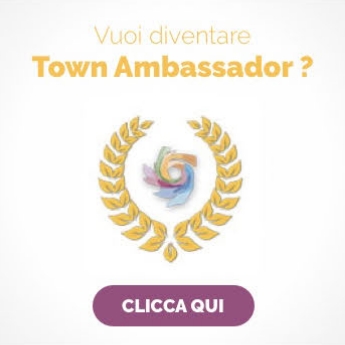

Albano Laziale is immersed in the Castelli Romani Park and gives its name to the great volcanic lake also famous for the residence of the Popes in Castelgandolfo. In its area is the large agricultural farm that supplies food for the Vatican and the Pope.
Its history began in the Bronze Age and there are remains of a village on stilts along the shores of the lake, but the first recorded history concerns the mythical city of Alba Longa which had been the head of the Latin League. To commemorate its history, in its coat of arms there is a white sow (Alba) suckling thirty little pigs (the thirty cities of the Latin League) under an ancient oak tree at the edge of the lake and of Mount Albano, where Giove Laziale had its seat and its main temple. This story is also told in Virgil's Aeneid.
From the 5th century B.C., with the growth of Rome, the area became enriched with temples and shrines especially in the Lucus Ferentinum, the sacred place where the federation of the Latin League once met.
Dal V secolo AC, con l’arrivo di Roma, l'area si arricchisce di templi e santuari soprattutto nel Lucus Ferentinae, il luogo sacro dove un tempo si riuniva la federazione della Lega Latina.
Nel 312 vi arrivò la via Appia e, per le sue situazioni naturalistiche e logistiche, Albano venne scelta da molti uomini illustri di Roma per le loro ville, come ad esempio Pompeo Magno, nella Roma repubblicana, e gli imperatori Tiberio, Claudio, Domiziano, Settimio Severo, ecc.
L’assetto topografico di Albano viene dall’accampamento della II Legione Partica, 6.000 soldati con famiglia e personale di servizio, voluto dall'imperatore Settimio Severo nel II secolo DC. Questo è l’unico esempio di legione romana che aveva la sua sede in Italia in quanto doveva proteggere direttamente l’imperatore.
Grazie a questo insediamento la città si dota di terme, un anfiteatro, un articolato sistema di raccolta e distribuzione acqua e templi e tutto è ancora in parte visibile.
Con il Cristianesimo Albano diventa sede vescovile e la città inizia una seconda nuova vita urbana con la costruzione di numerose chiese, conventi, cenobi e comunità rurali e cristiane. Numerosi pellegrini che giungevano da ogni parte d'Europa venivano qui a venerare le reliquie dei santi e dei martiri.
Nel medioevo, per proteggersi dalle invasioni barbariche, la città si raccoglie in un luogo fortificato, sotto il dominio della famiglia Savelli che costruisce un castello, un palazzo baronale, mura di difesa e torri. La famiglia Savelli è stata sempre in lite con il papato e alleata della famiglia Colonna e diede ad Albano il titolo di ‘principato’.
La città è stata più volte assalita e depredata: saccheggiata dai Saraceni nell’IX secolo e rasa al suolo due volte: nel 1168 e nel 1436 dal cardinale Vitelleschi. Albano fu tra i primi comuni del Lazio a godere di una certa libertà comunale. Nel 1697 il territorio venne messo all’asta per problemi economici dei Savelli e passò sotto il controllo della Camera Apostolica e la città ha avuto una nuova rinascita con la riapertura della Via Appia Nuova di collegamento con Napoli in sostituzione di quella antica che si era impaludata.
Albano diventa una stazione di posta e in questo periodo avviene la costruzione di nuove piazze, strade e numerosi palazzi dei nuovi patrizi romani.
La situazione cambia con Napoleone Bonaparte che ricatta lo Stato Pontificio e il papa mette all’asta il feudo di Albano ma all’ultimo momento decide di chiedere un prestito e tenerlo. Quando nel 1798 venne dichiarata la Repubblica Romana, Albano, Frascati, Velletri e Marino si dichiararono repubbliche ‘sorelle’.
Nel 1816 rientra fra i possedimenti della Camera Apostolica fino all'Indipendenza d'Italia e per questo periodo fu sede di governo della provincia di Comarca di Roma che comprendeva 18 comuni. Nell’Ottocento Albano era un centro di villeggiatura ed è stata meta di illustri turisti come Goethe, Stendhal, Gogol, D'Annunzio.
Durante la Seconda Guerra Mondiale è stata fortemente bombardata due volte dopo lo sbarco degli alleati nella vicina Anzio.
Oggi è uno dei centri più vivaci dei Castelli Romani dalla intensa vita culturale mentre le sue frazioni di Pavona e Cecchina sono centri dove fioriscono attività artigianali e legate ai servizi.




















Follow us